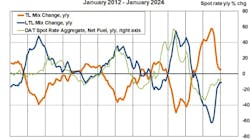The National Highway Traffic Safety Administration (NHTSA) plans to prepare an Environmental Impact Statement (EIS) to analyze the potential environmental impacts of new fuel efficiency standards for commercial medium- and heavy-duty on-highway vehicles and work trucks, potentially covering engines, chassis, vehicles, and/or trailers manufactured after model year 2018.
In particular, NHTSA will propose Phase 2 of the Fuel Efficiency Improvement Program (potentially covering engines, chassis, vehicles, and/or trailers manufactured after MY 2018) as part of a joint rulemaking with the Environmental Protection Agency (which will propose new greenhouse gas regulations for heavy-duty vehicles).
In connection with this action, NHTSA will prepare an EIS to analyze the potential environmental impacts of the proposed HD vehicle fuel efficiency standards and reasonable alternative standards pursuant to the National Environmental Policy Act (NEPA) and implementing regulations issued by the Council on Environmental Quality (CEQ) and NHTSA.
NEPA instructs Federal agencies to consider the potential environmental impacts of their proposed actions and possible alternatives. To inform decision-makers and the public, the EIS will compare the potential environmental impacts of the agency's Preferred Alternative and a spectrum of reasonable alternatives, including a ``no action'' alternative. As required by NEPA, the EIS will consider direct, indirect, and cumulative impacts of the proposed action and alternatives and will discuss impacts in proportion to their significance.
Latest from News
Latest from News








